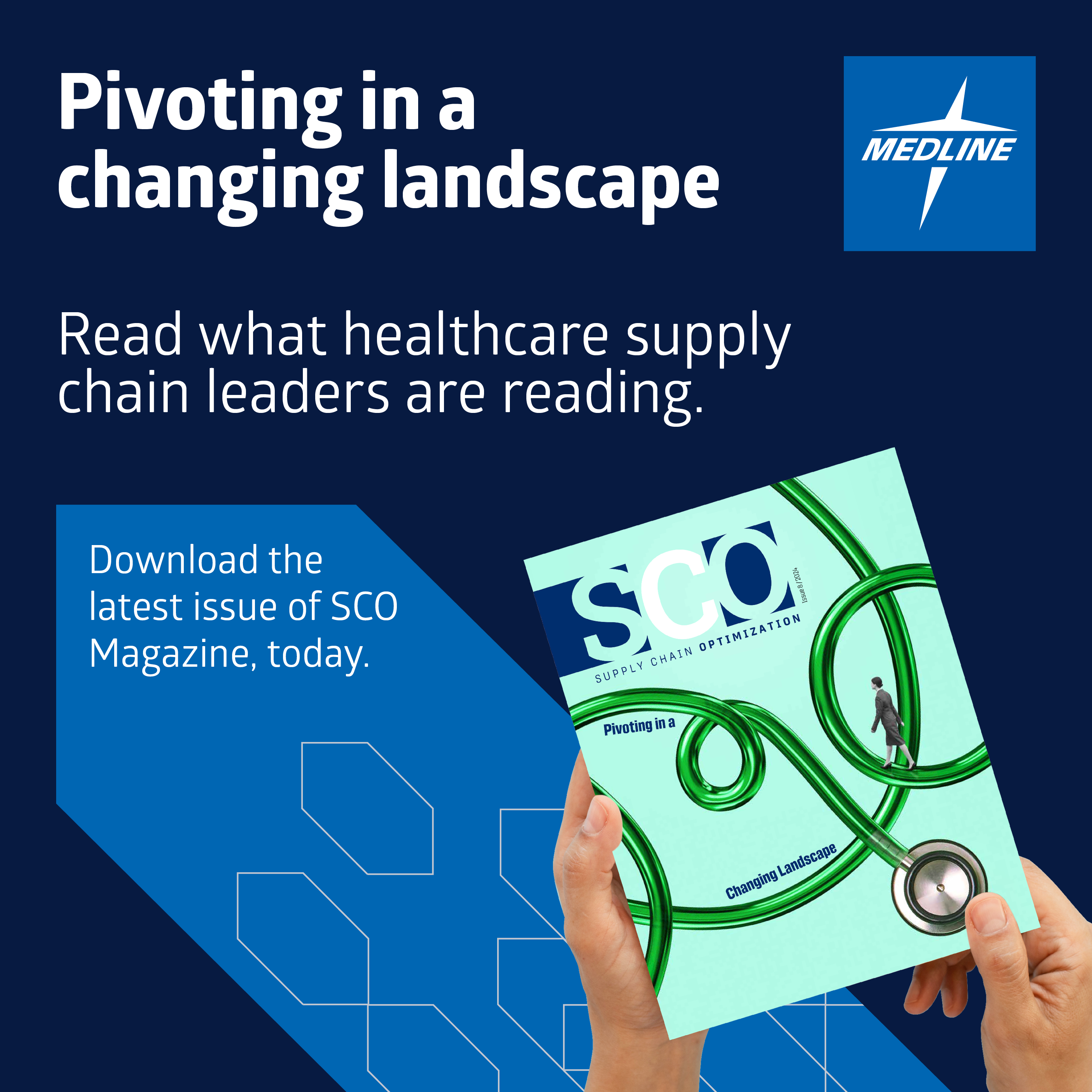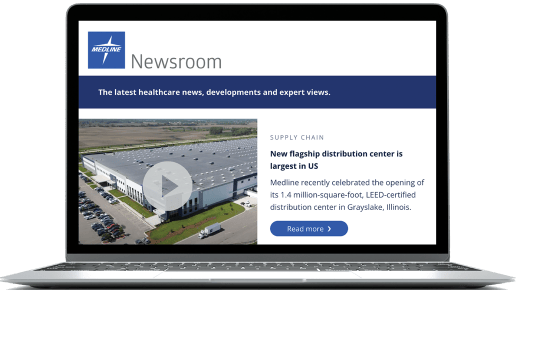Optimizing data collection and analysis to improve supply chain efficiencies

By Medline Newsroom Staff | April 13, 2023
The last few years have brought an increased visibility to the healthcare supply chain, as well as a new and elevated focus on the importance of effectively predicting product demand and preparing for possible shortages. The Medline Newsroom recently spoke with Josh Wolfe, Medline senior vice president of inventory management, about the use and value of data and analysis in helping providers drive efficiencies, mitigate risk and strengthen their supply chains.
- Why is there greater focus today on collecting and utilizing data in the healthcare supply chain?
- Josh Wolfe: Without a doubt, supply chain is top of mind for almost every healthcare system. Supply chain has a seat at the table these days, whereas historically it was more of a back office function. It also was generally assumed that what was ordered would arrive and on time. That didn’t always happen during the pandemic, and as a result, a bit of trust was lost. Now, healthcare supply chains need to rebuild that trust. And to do that, we need a foundation of data sharing. Providers want to trust but verify, and they want to have better integration, better visibility upstream and downstream in the supply chain. If I’m a provider, I want to see for myself where the issues might be and make plans in advance. Many healthcare systems were caught flat-footed during the pandemic. And in an environment where you had staffing shortages, all of the effort required to find supplies and make sure that clinicians could take care of patients, was an enormous burden. They don’t want to be put into that position again, so they are trying to take the approach that an ounce of prevention is worth a pound of cure.
As the supply chain stabilizes, it’s important that data and analytics aren’t cast aside. Resiliency and integration in the healthcare supply chain will require ongoing innovation and vigilance.”

Josh Wolfe
Medline Senior Vice President of Inventory Management
- What constitutes good data, and how important are analytics to ensure a more resilient supply chain?
- Josh Wolfe: Data enables the process and the outcomes that you want. But if you don’t know what data you need, or you don’t know how to use it or how to draw conclusions, then it’s almost counterproductive; you’re putting a lot of time into pulling data and sharing it without really driving better outcomes. Some health systems are eager to jump right in: Let’s start passing data back and forth, let’s see what’s available. Typically, we try to define the scope and goals first by asking, “What is it that we’re trying to accomplish? What metrics are we wanting to improve?” For example, is the priority to improve the fill rate or reduce operational expenses? If we look toward the end and figure out what problem we’re trying to solve, then we can determine what data can solve that problem and what resources and processes are needed on both sides to acquire, maintain and analyze it. If you’re not using data to drive a process, then it’s just data for the sake of data.
- How important is clinician input in providing a complete picture of supply needs and timing?
- Josh Wolfe: Most prime vendor relationships involve thousands of SKUs (stock keeping units). And when you have supply shortages, the impact on clinicians and patient care can vary greatly depending on the item. For items that are less clinically sensitive, there may be easily obtainable alternatives. For other products, the approval process for alternatives can be very difficult and time consuming. We strive for best in class fill rates in all categories; however, it makes sense to put extra focus on those clinically sensitive items. And this is where clinicians can help us determine what the most important and impactful products are, even if we don’t anticipate a supply disruption. Let’s identify what those items are and let’s create plans for them now. Then, if we ever run into a situation where there’s a supply gap, you already have a plan; you already have approval to substitute a different product. Medline works with providers to develop these clinician-approved product substitution lists that ensure a seamless transition from one product to another. Basically, we want to do the work ahead of time so you’re not scrambling to find alternative products when there’s a disruption. You don’t fix the roof when it’s raining, you do it when it’s sunny.
- How do you see data and analysis evolving within the healthcare supply chain?
- Josh Wolfe: There’s a lot of potential and a lot more that can be done. Machine learning, artificial intelligence and other technology solutions will continue to evolve, making data collection, analysis and sharing easier. The more data you have the more you can do with it. As an example, visibility into provider data like patient census trends, procedural volumes or planned surgery schedules, can drive predictive analytics and allow for better forecasting of supply needs which leads to fewer product shortages. As the supply chain stabilizes, it’s important that data and analytics aren’t cast aside. Resiliency and integration in the healthcare supply chain will require ongoing innovation and vigilance.
In addition to regularly promoting and fine-tuning the bidirectional exchange of data with provider customers, Medline offers inventory planning solutions, including the customized 3PL third-party logistics stockpile management program. Through 3PL, Medline is able to warehouse large amounts of healthcare system-owned inventory, place it into our distribution center infrastructure, and then utilize our systems, our technology and our logistics to provide visibility to those stockpiles. Then when needed, the extra product can be quickly delivered to the provider.
Medline also has invested more than $2 billion since 2018 in U.S. distribution centers, manufacturing capabilities and IT upgrades through the company’s national capital expenditure campaign, the Healthcare Resilience Initiative. In mid-2022, Medline invested an additional $500 million in incremental medical supply inventory—bringing the company’s total, on-hand inventory to more than $4 billion.
Learn more about Medline inventory planning solutions.
Learn how Medline tailors solutions across the entire continuum of care as a manufacturer and distributor.
Medline Newsroom Staff
Medline Newsroom Staff
Medline's newsroom staff researches and reports on the latest news and trends in healthcare.


